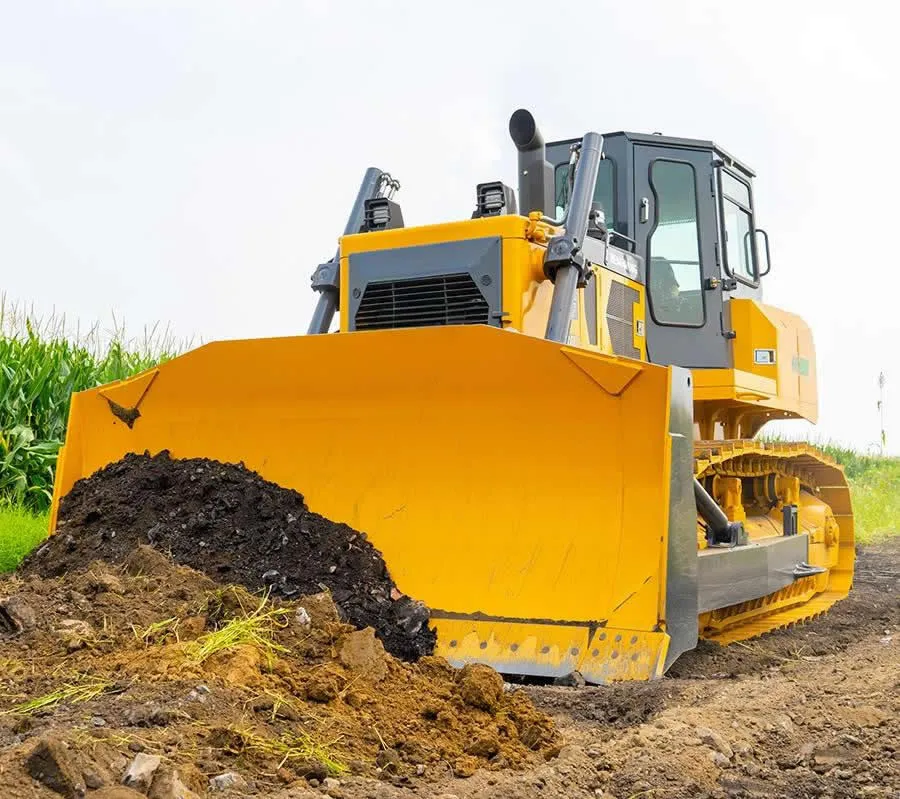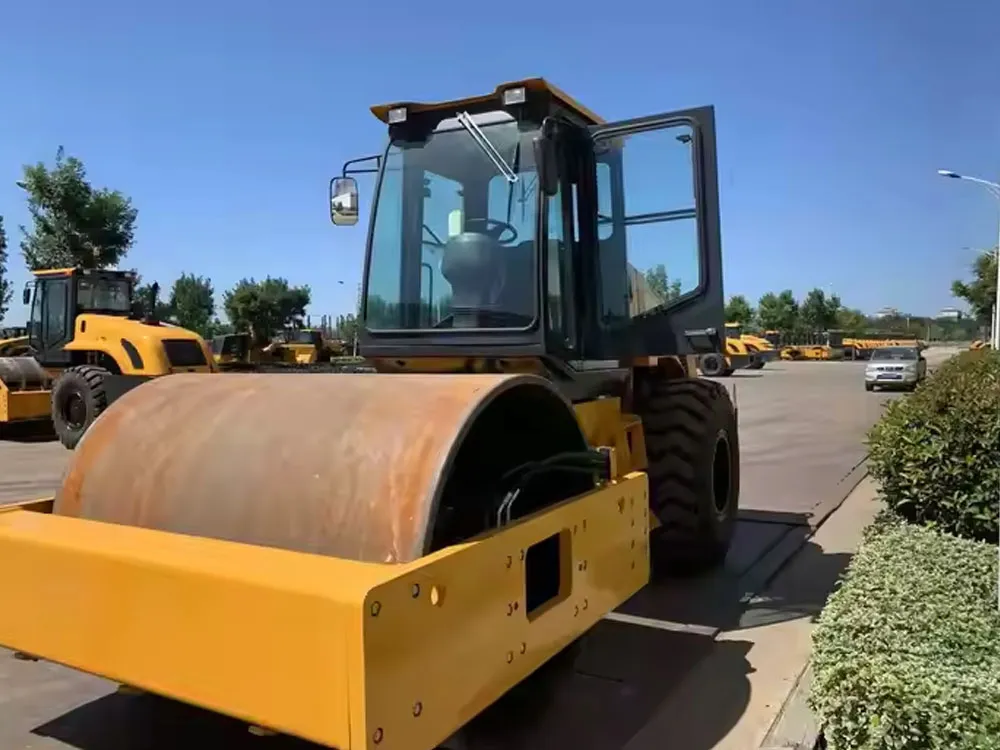Bulldozers, rollers, and motor graders are essential heavy-duty construction equipment in modern road construction. Their proper operation directly impacts project quality and safety. They play a vital role in the pavement construction process, involving earthmoving, compaction, and leveling. Proper use of these equipment not only improves construction efficiency but also ensures project quality. This article discusses the special precautions required when using bulldozers, rollers, and motor graders in pavement construction to ensure operational safety and effectiveness.

Bulldozers are primarily used for moving, pushing, and leveling earth, and are a common and important piece of equipment on construction sites. When using bulldozers, the following points require special attention:
1.1 Soil Type and Operational Suitability
Bulldozer efficiency is closely related to soil type. When working in slippery mud or sand, pay special attention to the bulldozer's traction and stability to avoid slipping or rollover.
Crawler bulldozers have a low ground pressure (0.04–0.13 MPa) and are suitable for soft, muddy terrain, or complex terrain with slopes ≤25°. Wheeled bulldozers are suitable for short-distance transport on hard surfaces, but avoid oversteering, which can cause tire wear.
1.2 Layered Fill Requirements
When constructing embankments, the thickness of each layer should not exceed 30 cm, and the bulldozer blade angle should be adjusted according to soil properties. When moving hard soils of Class III or higher, use a scarifier beforehand to break them up.
1.3 Properly Adjust the Blade Angle
Adjust the bulldozer blade angle according to construction requirements to ensure effective earthmoving. Excessively large or small angles will result in uneven earth accumulation, affecting construction quality.
1.4 Regularly Check the Hydraulic System and Scraper
The bulldozer's hydraulic system and scraper blade are key components for stable operation. Before and after operation, check the quality and quantity of the hydraulic oil and the wear of the scraper blades to ensure smooth operation.
1.5 Choosing the Right Operating Speed
Bulldozers require controlled operating speeds in different operating environments. Excessively high operating speeds can easily lead to uneven earthmoving and damage the equipment. Adjust the operating speed based on the soil quality and the operating area.
The primary function of a roller in road construction is to compact the roadbed, base course, and surface course to ensure a smooth and stable road surface. The following precautions should be taken during operation:
2.1 Choosing the Appropriate Compacting Wheel Type
Rollers come in a variety of types, including steel and rubber wheels. Each type of compacting wheel has different suitability for different operating conditions. Choosing the appropriate compacting wheel type can improve compaction efficiency and avoid uneven compaction.
Aggregate Base
Preferably, use a single-drum roller with a capacity of 30 tons or more, with an amplitude of 1.5–1.8 mm and a frequency of 28–33 Hz.
Asphalt Surface
For double-drum rollers, the initial compaction temperature should be ≥135°C. Use a combination of static pressure and low-frequency, high-vibration (10–12 Hz).
2.2 Avoid Overcompaction
Excessive compaction can make the foundation airtight, affect the pavement's drainage, and potentially cause settlement. The number and depth of compaction cycles should be appropriately controlled based on the subgrade type and moisture conditions.
2.3 Control Vibration Frequency and Amplitude
The roller's vibration frequency and amplitude significantly impact the compaction results. Excessively high frequencies can cause cracks in the pavement, while excessively low frequencies can result in insufficient compaction. The appropriate vibration frequency should be adjusted according to the soil type and moisture content.
2.4 Travel Speed Control
During the compaction process, the roller's travel speed should be controlled within an appropriate range. Avoid excessively high speeds, which can lead to uneven compaction, or excessively slow speeds, which can waste time and fuel.

A motor grader is a crucial piece of equipment in pavement leveling operations, primarily used to evenly level the pavement. The following are precautions when using a motor grader:
3.1 Blade Adjustment and Operating Angle
Before operation, the blade angle and depth should be adjusted according to the degree of road surface unevenness. An inappropriate blade angle will result in poor leveling results and increased equipment wear. The moisture content of fine-grained soil should not exceed ±2% of the optimal value before compaction. If it is too dry, spray moisturize it. When leveling asphalt mixture, preheat the blade to above 80°C to prevent sticking.
3.2 Controlling Operating Depth
For pavement base construction, the motor grader blade should be set to a shallow depth to avoid damage to the base structure. When leveling the surface, maintain a consistent depth to ensure a smooth surface after leveling.
3.3 Checking the Wear of the Scraper and Cutting Blade
The scraper and cutting blade are key components of a motor grader. After prolonged use, scrapers and cutters will gradually wear out, affecting the leveling effect. They should be inspected before operation and replaced or repaired as necessary.
3.4 Appropriate Operating Speed
The motor grader should maintain an appropriate operating speed during different operation stages. Excessive speed will result in uneven surface, while excessive speed may lead to inefficient operation and delays.
Whether using a bulldozer, roller, or motor grader, the following safety regulations must be strictly adhered to during road construction operations:
4.1 Equipment Maintenance and Inspection
Before each operation, a comprehensive inspection of the equipment, including key components such as the oil, scraper, and hydraulic system, must be conducted to ensure that the equipment is in good working condition.
4.2 Working Environment Safety
In the construction area, ensure the ground is flat, free of obstacles, and has sufficient load-bearing capacity. Clean the construction site before operation to prevent equipment loss due to debris or uneven surfaces.
4.3 Operator Training
Operators must receive professional training and be familiar with the equipment's operating procedures and safety standards. Especially when working in complex terrain, special attention should be paid to proper operating skills to avoid accidents.
4.4 Observe Safety Signage in Construction Areas
Post clear safety signs in road construction areas and strictly adhere to safety regulations to prevent unauthorized personnel from entering the construction site.
Bulldozers, rollers, and graders are crucial in road construction. Proper operation and meticulous maintenance during construction not only ensure efficiency but also maximize project quality and safety. Therefore, construction companies should strengthen equipment management and operator training to ensure that equipment is in good condition for high-quality road construction.
If you have any questions about the operation of bulldozers, rollers, and graders, or are interested in purchasing bulldozers, rollers, and graders, or related accessories, please contact us.